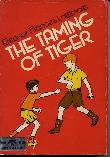Following two posts by Jonathan Adler, readers there are discussing CPSIA’s effects on vintage kids’ books and on rhinestones and crystals. More: Glenn Reynolds, Instapundit (with link to Adler), Megan McArdle (linking to my City Journal piece). And Joseph Bottum at First Things has generous words for our coverage of the story.
Posts Tagged ‘CPSIA’
CPSC confirms rhinestone CPSIA ban
On July 17 the Consumer Product Safety Commission refused to exempt or stay the coverage of crystals, rhinestones and glass beads under the Consumer Product Safety Improvement Act of 2008. Although lead has long been an ingredient in the manufacture of all true crystals, most rhinestones and many glass beads, there seems to be a dearth of actual real-life instances of children contracting lead poisoning from licking, chewing or swallowing these baubles, apparently because the lead in question, unlike lead in metallic form or in paint pigments, is bound to other substances and not “biologically available”. 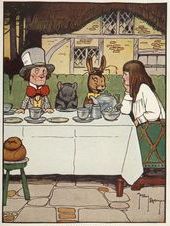 “Even if you have it in stomach acids for weeks it does not come out,” said Michael Gale, director of the Fashion Jewelry Trade Association, in one recent story. Gale’s trade group had petitioned (PDF) for the regulatory relief. (Earlier background in our March 7 and Feb. 25 posts).
“Even if you have it in stomach acids for weeks it does not come out,” said Michael Gale, director of the Fashion Jewelry Trade Association, in one recent story. Gale’s trade group had petitioned (PDF) for the regulatory relief. (Earlier background in our March 7 and Feb. 25 posts).
To a large extent the Commission’s hands were tied (PDF) by the absolutist, not to say fanatical, prescription of CPSIA itself, which directs that exemptions be turned down if they could lead to “any” — not “infinitesimal”, not “too small to worry about” — absorption of lead or public health risk. This point was recognized by both the commission’s career staff (PDF: “the staff would have recommended that the Commission not consider the product to be a hazardous substance to be regulated under the FHSA”) and by its three commissioners (Tenenbaum, Moore, Nord statements). CPSC Chairwoman Inez Tenenbaum, a Democrat, noted that the law “does not allow for the consideration of risk”. So it doesn’t matter that other jurisdictions, like Europe or California, may regulate this topic in a more realistic way, or that vast stocks of existing children’s clothing, from performance dance troupe outfits to 11-year-olds’ “blingwear”, will instantly be rendered worthless. It doesn’t even matter whether a kid’s health is at more risk (by way of traffic accidents) from being driven to the mall to buy a substitute garment than from going ahead and wearing the rhinestone-bedecked tiara or camisole in question (coverage: The Hill, ShopFloor, Manatt Phelps & Phillips, Rick Woldenberg, Way to Bow, Los Angeles Times).
As Commissioner Nancy Nord notes, the ban will inflict major economic losses, possibly extending to the disappearance of entire product lines, since consumers generally don’t like plastic substitutes for rhinestones as well as the real thing. 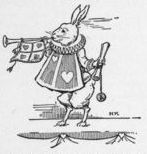 America’s costume jewelry industry is based in Rhode Island, and the Providence Journal has led with the most serious newspaper coverage (“Kids can’t wear rhinestones“) of last month’s decision, which as usual has been entirely ignored by the New York Times and various other large papers. More: Justin Katz at Rhode Island blog Anchor Rising (“So, the economy is struggling, right? Well, what better time to beginning banning products that are acknowledged to be safe and for which there’s an active market?”). For the effects of the ban on one well-known purveyor of kids’ clothes, Gymboree, see this March Washington Post report, as well as our March 23 account. Although the CPSC is making noises about concentrating its enforcement on products for kids 6 and under — a cutoff mentioned nowhere in the law — Rick Woldenberg thinks this is doomed to fail as a step toward reassuring businesses, however well-intentioned it may be, since the goods remain flatly illegal for kids 7-12.
America’s costume jewelry industry is based in Rhode Island, and the Providence Journal has led with the most serious newspaper coverage (“Kids can’t wear rhinestones“) of last month’s decision, which as usual has been entirely ignored by the New York Times and various other large papers. More: Justin Katz at Rhode Island blog Anchor Rising (“So, the economy is struggling, right? Well, what better time to beginning banning products that are acknowledged to be safe and for which there’s an active market?”). For the effects of the ban on one well-known purveyor of kids’ clothes, Gymboree, see this March Washington Post report, as well as our March 23 account. Although the CPSC is making noises about concentrating its enforcement on products for kids 6 and under — a cutoff mentioned nowhere in the law — Rick Woldenberg thinks this is doomed to fail as a step toward reassuring businesses, however well-intentioned it may be, since the goods remain flatly illegal for kids 7-12.
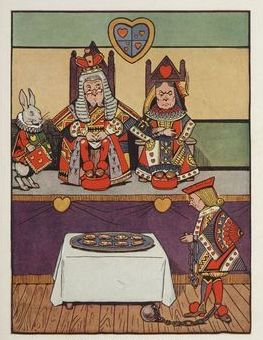
Hugh Hewitt (via Wood) draws a wider moral from politicians’ refusal to take responsibility for the series of disasters the law has brought about:
The refusal of Congress to move to clean up the mess it made with CPSIA also announces what will happen after Congress passes its magic wand over health care and blows up who knows what: nothing. Tough luck. Deal with it. They will all have campaigns to run which won’t want to focus on the new law’s failures and shortfalls.
At Forbes, meanwhile, Jeff Stier of the American Council on Science and Health points out that soil from the White House organic garden has higher concentrations of lead than many products banned under the new law.
PUBLIC DOMAIN IMAGES by illustrator Gordon Robinson from 1916 Samuel Gabriel & Sons reprint of Alice’s Adventures in Wonderland, courtesy ChildrensLibrary.org.
CPSIA and books: “A bad law threatens our past”
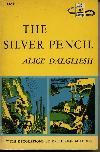 Elizabeth Mullaney Nicol has an excellent article in The New Atlantis on the Consumer Product Safety Improvement Act and its appalling consequences for old children’s books and the cultural inheritance they represent. (If you’re new to this topic, we’ve covered it extensively here and here.) Among the questions she addresses:
Elizabeth Mullaney Nicol has an excellent article in The New Atlantis on the Consumer Product Safety Improvement Act and its appalling consequences for old children’s books and the cultural inheritance they represent. (If you’re new to this topic, we’ve covered it extensively here and here.) Among the questions she addresses:
Isn’t there a wealth of worthwhile children’s literature published since 1985 for kids to read?
[Older books,] as a group, have certain desirable characteristics. Children’s books of yore tend to use more sophisticated, literary language than their more recent counterparts. The quality of their paper, bindings, and illustrations are often superior. Vintage children’s books assume and encourage the readers’ fascination with adventure, their eagerness to learn about the world, their respect for great men and women.
Won’t the really good older books survive in post-1985 reprint editions that can be sold without fear of liability? (Yes, one really does hear this argument.)
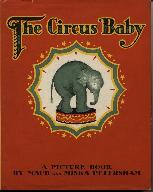
Some books from the 1950s and 60s are back in print, but with updated illustrations so the characters appear to be from our time; if that’s what it takes to lure readers who are wary of anyone who doesn’t look like them to pick up the books, it’s probably fine, but there is also value in presenting books with a style of illustration and characters with a style of dress from a different time, and that’s what we get with old copies. Some books, such as the Hardy Boys and Nancy Drew series, are thoroughly “updated” for today’s readers—simplified, abbreviated, substituting familiar words for those no longer commonly used—so if a child is going to read the originals he needs to read old copies….
Some old books, it is true, express ideas and attitudes of which we would disapprove, prejudices and errors that make modern readers wince. But learning about such sentiments firsthand is at the heart of what it means to learn our history. Moreover, while correcting some of these past problems, our present age has its own objectionable attitudes.
Won’t older children’s books still be available when intended for adult use, say as collectibles or for research?
But the availability of these books to children is the very purpose and value of preserving them. We want them in children’s hands, being read, not only preserved on the dusty back shelves of research libraries. Quantities are important — quantities of titles, and quantities of each title, so they are readily available for loan from public libraries and for purchase through used booksellers. Families have been able to build home libraries through priced-for-reading book sales and thrift stores. … We are suddenly facing the prospect that many of these books will be destroyed, making those that remain all the more rare and inaccessible.
Some used booksellers, trying valiantly to continue selling books for children, are re-labeling their children’s books as collectors’ editions. But this obscures the books from searches by those looking for ordinary children’s books, it clutters the market for real collectibles, it makes the bookseller look ignorant of his trade, and it is prohibited under CPSIA, which stipulates that a book “commonly recognized” as being meant for children’s use will be regulated as such.
The article’s strength, I should note by way of quibble, is not as legal advice: it somewhat overstates the stringency of the law, which does not ban the sale of all untested pre-1985 kids’ books as such, instead exposing booksellers to punishment when they guess wrong about whether a given volume would meet current standards (hence the CPSC’s guidance advising retailers to discard them all). And the call for “sequestering” library copies has thus far come from only one member of the three-member CPSC, not as yet the full commission. As a summation of what will be lost to children and the nation if Congress does not change this law, however, the article is one of the best yet. Read it here.
Relatedly, Ken at Popehat is still trying to grasp the news that according to our federal government:
Children’s books have limited useful life (approx 20 years)
And since Rep. Henry Waxman, closely identified with CPSIA and its defense, has a new book out, Carter Wood at ShopFloor wonders whether this topic is going to come up at any of his bookstore appearances.
P.S. Fenris Lorsrai at LiveJournal reprinted the Nicol article and in so doing prompted some interesting reader comments.
GRAPHICS courtesy VintageChildrensBooks.com.
Ukraine’s gift to the Cheney family
 As a goodwill gesture, the president of the Eastern European nation gave the former Second Family some of the sorts of decorated blouses, wooden toys, and other crafted children’s items for which Ukrainian culture is renowned. But did Lynne Cheney risk flouting the intent of CPSIA by accepting them? [Carter Wood, ShopFloor; Al Kamen, Washington Post]
As a goodwill gesture, the president of the Eastern European nation gave the former Second Family some of the sorts of decorated blouses, wooden toys, and other crafted children’s items for which Ukrainian culture is renowned. But did Lynne Cheney risk flouting the intent of CPSIA by accepting them? [Carter Wood, ShopFloor; Al Kamen, Washington Post]
CPSIA and compliance: “This can’t be happening”
Good article in Arizona Republic on the difficulties besetting a Scottsdale diaper maker, a Chandler toy maker that has spent $400,000 on compliance efforts with no end in sight, a baby carrier maker in Mesa that expects to go under, and a maker of fabric products in Chandler who says she can’t keep up with the changing requirements. [Chase Purdy, “Companies feel strain of complying with safety law”, July 8]
CPSIA, kids’ resale and the Times, cont’d
The New York Times, which to the amazement of many has printed scarcely a word about the catastrophic effects of the law it still defends, now runs a Fashion & Style story applauding what it identifies as a trend among affluent urban parents toward buying used products for their kids rather than always insisting on new (Sarah Wildman, “For Firstborns, Secondhand Fits the Bill“). But it never mentions the reason why those parents will find the selection of kids’ goods around the nation’s thrift shops to be much, much sparser than it was a year ago.
Even as it spots this supposed trend, the paper does not quote anyone who works in an actual secondhand business; it does mention picking up used stuff free from “friends’ garages” and buying on Craigslist, where it’s easy to find sellers who don’t know (or at least claim not to know) that the law covers them too. You have to wonder what’s going on with the editors at this newspaper. Are they under some sort of orders not to mention CPSIA and its effects? Or do they just not know any better? (More: ShopFloor).
CPSIA’s tracking-labels fiasco: T minus six weeks
On August 14, unless the Consumer Product Safety Commission acts to stay matters, a new set of CPSIA provisions will take effect requiring makers of children’s products to affix to their goods tracking labels intended to facilitate future recalls and other safety-related measures. As with many other aspects of this law, the tracking rules impose a burden that is perhaps bearable for many producers who operate on a large industrial scale; as noted in some detail two weeks ago, however, they are causing much hair-pulling — if not thoughts of retirement or bankruptcy — for many others that produce handmade, customized or small-batch items, or items not well suited in size, material, use or packaging to an individual labeling process. Kathleen Fasanella has a short account at Fashion Incubator explaining some of the steps that will be expected of those producing children’s apparel and sewn products, including makers who might have been turning out a dozen hats or cloth dolls a month at their kitchen tables: 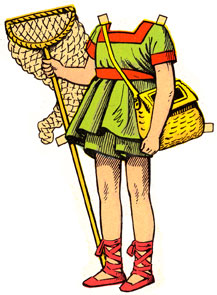
…Each batch needs a unique identifying number.
However, if in the course of making the products, you have to break into a separate box of buttons that has a separate batch or lot number itself, even if the product is otherwise identical, this is a separate batch and you need a separate new label for it with its own batch number that you assign. … It is conceivable [if you incorporate variations into the product] every item you produce is its own batch and each needs its own number and label. …
You will need to do “batch control”. You need to create a separate BOM [Bill of Materials] for each batch. You can keep this electronically in a database or spreadsheet. It is my understanding you need to keep these records for three years.
The CPSC has issued no guidance on the tracking label requirements, which means producers can only guess as to exactly what will prove acceptable, with the price of guessing wrong set very high indeed. A hearing by the commission in May aired a sampling of the expectations of disaster from various affected businesses around the country.
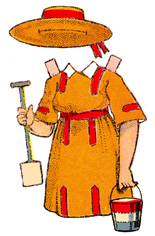
Per ShopFloor, “the National Association of Manufacturers and the CPSC Coalition have submitted another request for an emergency, one-year stay of enforcement” of CPSIA’s Section 103, which imposes the requirement; the commission has (after much agonizing) agreed to stay some of the law’s other impractical mandates for periods of a year or two, but a petition to stay the tracking-label rules failed in March when the then-two-member commission split 1-1 on it. Now, however, a third member has joined in the person of newly confirmed Chairman Inez Tenenbaum, whose opinion may prove decisive. Reform voice Rick Woldenberg argues that the CPSC should adopt at least a one-year stay and indeed go further than that so as to avert a “fiasco” that “creates enormous burdens for industry and is in many ways pointless and unjustifiable”.
Or Congress could step in, admit it went too far last year, and set about fixing things. Just kidding! We know it won’t.
Public domain paper doll images courtesy Karen’s Whimsy.
CPSIA and … automotive products?
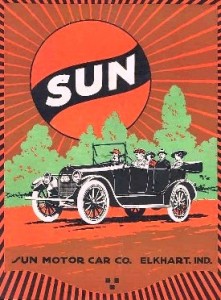 Nearly all the outcry about the Consumer Product Safety Improvement Act of 2008 has focused on its absurd and impracticable rules for products intended for kids twelve and under, such as apparel, books, toys, used items and so forth. But the law is actually a lot broader than that, imposing many new requirements and burdens that apply to wider classes of consumer products, whether or not intended for use by kids. Here’s the story of one miscellaneous provision causing major headaches for makers and distributors of specialty chemicals used in car care and maintenance (Paul Laurenza, “Product safety law imposes major burdens on auto suppliers”, Aftermarket Business, Apr. 3, via ShopFloor)
Nearly all the outcry about the Consumer Product Safety Improvement Act of 2008 has focused on its absurd and impracticable rules for products intended for kids twelve and under, such as apparel, books, toys, used items and so forth. But the law is actually a lot broader than that, imposing many new requirements and burdens that apply to wider classes of consumer products, whether or not intended for use by kids. Here’s the story of one miscellaneous provision causing major headaches for makers and distributors of specialty chemicals used in car care and maintenance (Paul Laurenza, “Product safety law imposes major burdens on auto suppliers”, Aftermarket Business, Apr. 3, via ShopFloor)
CPSIA chronicles, June 18
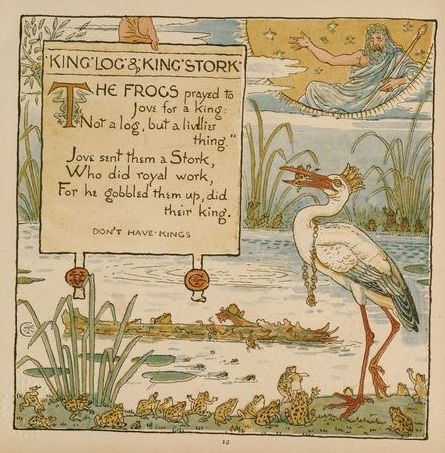
- As noted earlier, the next all-out debacle on the CPSIA front is expected to result from the law’s tracking and labeling regulations, due to take effect August 14, and for which the CPSC has not yet issued guidance, although product makers ordinarily need to resolve crucial issues of manufacturing (as with etching of lot numbers) and packaging at least many months if not longer in advance of sale. Sharon McLoone at CNNMoney had quite a good report a week ago on this latest crisis, which as of this writing has not been followed up much of anywhere else in the press. This continues the pattern in which 1) most key elements of the ongoing CPSIA disaster get good coverage in at least one (sometimes more) major media outlets; 2) the bigger-picture disaster of the law never quite succeeds in breaking out into general coverage as a national story, in large part because 3) the agenda-setting New York Times never consents (even six months into the story!) to give the matter any coverage at all. For more hints on the approaching tracking-label train wreck, see this op-ed by a South Carolina maker of school supplies (“Companies such as ours are now forced to guess about their new legal requirements. … My company may have to change labels hundreds of times a week in our two factories. The investment necessary to handle this new rule alone is crippling.”), or the comments of appliquéd bib maker Laurel Schreiber of Lucy’s Pocket (if the testing doesn’t get her, the tracking labels will), or of New Jersey wooden toy maker John Greco (advised that tracking info would add $3.50 to $5.00 to cost of making $10 handmade toy). And here’s a view from the home furnishings business.
- No, the menace to pre-1985 children’s books has not gone away, not in the least. Librarians and publishers remain on the edge of their seats awaiting exemptions, clarifications or both. There was some good coverage last month in the Sioux Falls Business Journal (store owner Jenny Cook “had to throw out only 30 books at her store to comply” because most were newer; “Siouxland Libraries has pulled a list of books that were published before 1985”) and at Syracuse.com (“When you think through the implications, it means closing our libraries to children”). And in a sign of possible things to come, ABC-affiliated stations in Seattle and Washington, D.C. have now run sensationalist “toxic books!” attacks on local libraries [Common Room, ShopFloor] More: Winifred Maker, Anderson Valley Post (April).
- The CPSC’s stay of enforcement didn’t really solve the problem of the ban on dirtbikes and mini-ATVs, and responsible users and dealers end up getting the short end of the stick [Jason Giacchino/ATVSource, Vince Castellanos/ESPN FMX, Motorcycle Industry Council, Charleston (S.C.) Post and Courier]
- Downtown Los Angeles is home to an estimated 500 toy companies — most of them far smaller than crosstown giant Mattel — and they’re in much distress from the law. [Alexa Hyland, L.A. Business Journal] The L.A. Times, which once gave serious scrutiny to the law’s effects on the apparel and resale sectors, seems (scroll) to be dropping the ball.
- Those who remain in the kids’-product business after coping with all the other parts of the law will also want to educate themselves about “recall escrows” [Rick Woldenberg]
- Inez Tenenbaum, named by Obama as new CPSC chair, had her confirmation hearing on Tuesday [ShopFloor and more, Rick Woldenberg]. Nancy Nord earlier stepped down from her role as acting chair.
- What, what, what could they have been thinking? The American Library Association has actually given its 2009 Public Service Award to California Senator Barbara Boxer, a key architect of some of CPSIA’s provisions; the retroactive phthalates ban she championed has been especially effective in forcing “books-plus” off library shelves, and she has turned a coldly unsympathetic ear to cries of distress over the law (via @melanes). To repeat: what could the ALA have been thinking?
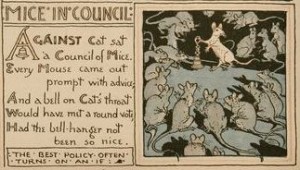
Public domain images courtesy ChildrensLibrary.org: Walter Crane, illustrator, The Baby’s Aesop (1887).
Bicycle smashup, of the regulatory sort
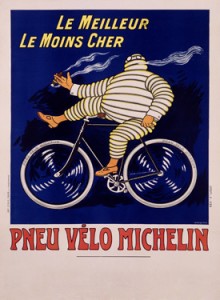 The Bicycle Product Suppliers Association has played a role (PDF) in the fight against CPSIA’s (presumably inadvertent) ban on kids’ bicycles; it’s also been dealing with a controversy in the New Jersey legislature over a proposed ban on quick release wheels. But now the legal bills are coming due: “In fact, the expenses associated with these issues could ultimately surpass the association’s entire annual budget of approximately $100,000,” said BPSA president John Nedeau [Bicycle Retailer].
The Bicycle Product Suppliers Association has played a role (PDF) in the fight against CPSIA’s (presumably inadvertent) ban on kids’ bicycles; it’s also been dealing with a controversy in the New Jersey legislature over a proposed ban on quick release wheels. But now the legal bills are coming due: “In fact, the expenses associated with these issues could ultimately surpass the association’s entire annual budget of approximately $100,000,” said BPSA president John Nedeau [Bicycle Retailer].

